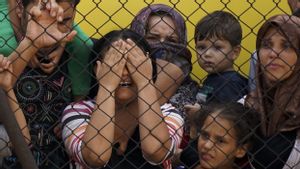JAKARTA - Nearly one in every six schoolchildren, or about 16 percent of children aged 11 to 15 years experienced cyber suppression in 2022, up from 13 percent four years ago, according to a WHO European report covering 44 countries.
"This report is a call for all of us to overcome oppression and violence, whenever and wherever it happens," WHO Regional Director for Europe Hans Kluge said in a statement.
According to a study entitled "Health Behavior in School Children", about 15 percent of boys and 16 percent of girls reported experiencing cyberbullying at least once in recent months
The UN agency further noted that the COVID-19 pandemic has changed the way teenagers behave towards each other.
"The forms of violence in cyberspace have become very relevant since the beginning of the COVID-19 pandemic, when the youth world became increasingly virtual during the lockdown," the report said.
The WHO further explained that the highest level of cyberbullying was experienced by boys in Bulgaria, Lithuania, Moldova and Poland. While the lowest level was reported in Spain, the agency continued without providing detailed data.
"With the younger generation spending up to six hours online every day, small changes even at the level of oppression and violence can have a major impact on the health and well-being of thousands of people," Kluge said.
One in eight teenagers admitted to carrying out cyber suppression of others, increasing three percentage points from 2018, the report said.
In most places, cyberbullying peaked when children were 11 years old for boys and 13 for girls.
"The socio-economic status of parents does not provide much difference in children's behavior," the report found.
But Canada is an exception, as the younger generation who are less fortunate are more likely to experience bullying.
There, 27 percent of girls included in the 20 percent of the most prosperous families said they had been targeted by bullying in schools, compared to 21 percent of girls included in the 20 percent of the most prosperous families.
Another suppression remained largely stable, with little increase.
About 11 percent of boys and girls reported experiencing bullying at school at least two or three times a month in recent months, compared to 10 percent four years ago.
Meanwhile, the number of teenagers involved in physical fights remained stable over a four-year period, which was 10 percent 14 percent for men and 6 percent for women.
SEE ALSO:
It said the study was based on data from 279,000 children and adolescents from 44 countries in Europe, Central Asia and Canada.
Given that this issue is widespread, the report calls for greater efforts to raise awareness.
"It takes more investment in monitoring various forms of peer violence," he said.
"There is also an urgent need to educate the younger generation, families and schools about the forms of cyberbullying and its implications, as well as regulate social media platforms to limit exposure to cyberbullying," he concluded.
The English, Chinese, Japanese, Arabic, and French versions are automatically generated by the AI. So there may still be inaccuracies in translating, please always see Indonesian as our main language. (system supported by DigitalSiber.id)


















